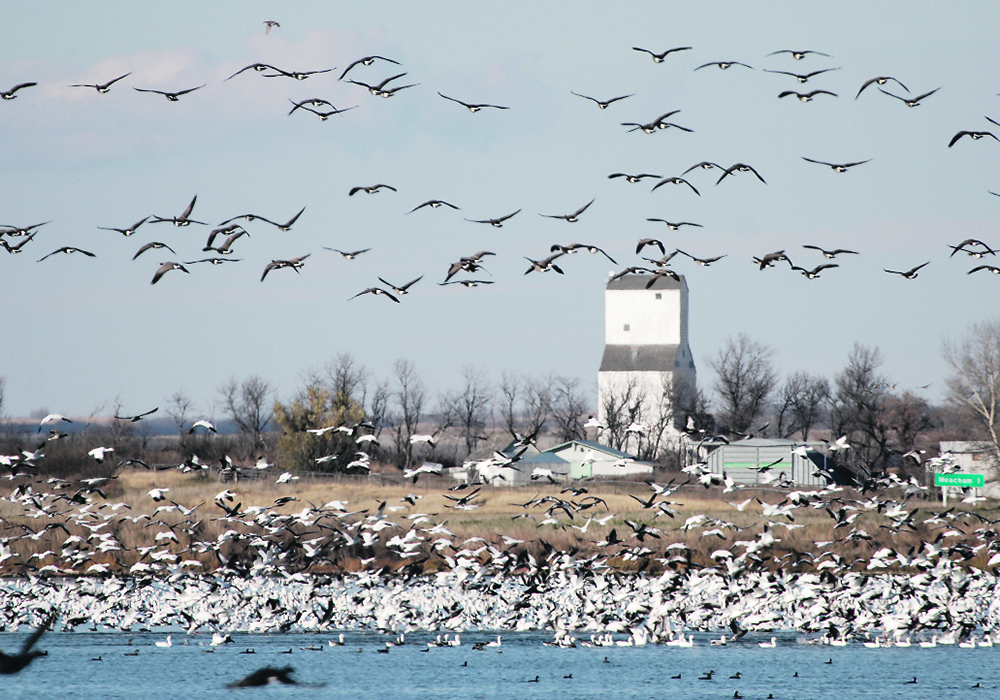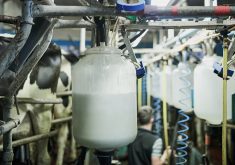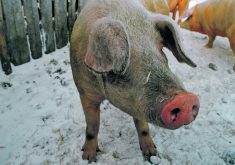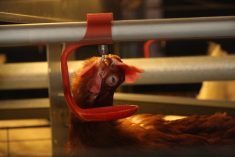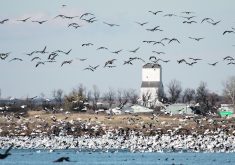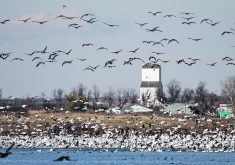Wild birds remain most likely suspects, but the CFIA is investigating detection of the disease in flies and darkling beetles
The signs are not great that avian influenza will stop spreading anytime soon, according to a workshop recently hosted by Animal Health Canada.
“We are now starting the third wave,” said Manon Racicot, veterinary epidemiologist with the Canadian Food Inspection Agency, during the workshop held in Ottawa on March 29.
Those waves have related to the spring and fall migration periods for wild birds, which started in earnest during March of 2022, struck again in the fall and are once again threatening domestic operations with the return of migratory birds this year.
Read Also

Trump’s tariffs take their toll on U.S. producers
U.S. farmers say Trump’s tariffs have been devastating for growers in that country.
Alberta was the epicentre of the first wave, where most of the two million birds culled were located.
British Columbia was the focal point of the second wave, where most of the seven million domestic birds were affected.
This year, so far, Quebec has seen nine commercial operations with confirmed cases since the end of January.
Racicot said test results for commercial operations following notification from producers are usually available within a day. CFIA has also been able to proactively identify cases through its surveillance programs.
She said CFIA’s work on the epidemiology of bird flu is focused on genetics, which has shown some spread in premises that share equipment, employees or feed deliveries. But the research also confirmed through much of the anecdotal information from poultry producers that the primary spread is not necessarily from farm-to-farm transmission. Genetically different stains of the virus affect different operations depending on the province.
In Alberta, testing on 37 commercial operations revealed 29 different genetic strains — seven shared the same genetic traits and one was inconclusive.
“From a temporal perspective, only three are compatible with a possible lateral spread,” said Racicot of the Alberta cases. “This is where we are focusing our primary epidemiological investigation…. I can already say wind could have contributed to the transmission.”
She called B.C.’s situation last fall where it was hit with 22 outbreaks at commercial operations in a single week “almost impossible to manage.”
She said B.C. had four different virus clusters, “which was a bit of a surprise. We were not expecting that much variability.”
She also highlighted the unexpected result of finding two different genetic strains on single operations on two farms: one in Alberta and the other in B.C.
In B.C., 18 different strains of avian influenza were identified.
But Racicot added that even in cases where various commercial operations were infected with similar strains, preliminary investigations have shown it hasn’t been due to farm-to-farm transmission.
“For most of these genetically connected farms, there was no documented links,” she said, stating CFIA investigated possible contamination from shared employees, equipment and even wind.
“We mostly have independent introduction of the virus, I would say, linked to the lack of biosecurity…. Some lateral spread through sharing of employee equipment which is typical in an integrated company.”
On the biosecurity side, Racicot said coop entrances may need to be changed on many operations, particularly separating potentially contaminated areas and uncontaminated areas in transition zones.
Providing bench areas for workers to sit while changing and ensuring proper hand-washing protocols, as well as changing boots, are improvements that can be made, she said.
“We know from past studies that when the visit is short, the likelihood of changing boots is low. If you are doing an in-and-out in a barn, they are not complying. They are not changing their boots,” said Racicot.
While she sympathized with farmers who may want to try to scare away wild bird flocks from commercial operations, Racicot advised against that because the potential of bringing back infected material from wild bird sites is high.
In terms on new potential disease vectors, the CFIA is investigating the detection of avian influenza in flies and darkling beetles.
“Are they significantly contributing to the dispersion of the virus? Maybe not, but this is something we’re going to be investigating,” said Racicot, adding insecticides are being applied before carcasses are removed from infected barns to prevent flies. Some producers are allowing coops to freeze before restocking them to control darkling beetles, she added.
While a return of avian flu is expected to again be an issue for commercial operations, only two have so far been reported in March: one in southern Ontario and one in Quebec.


